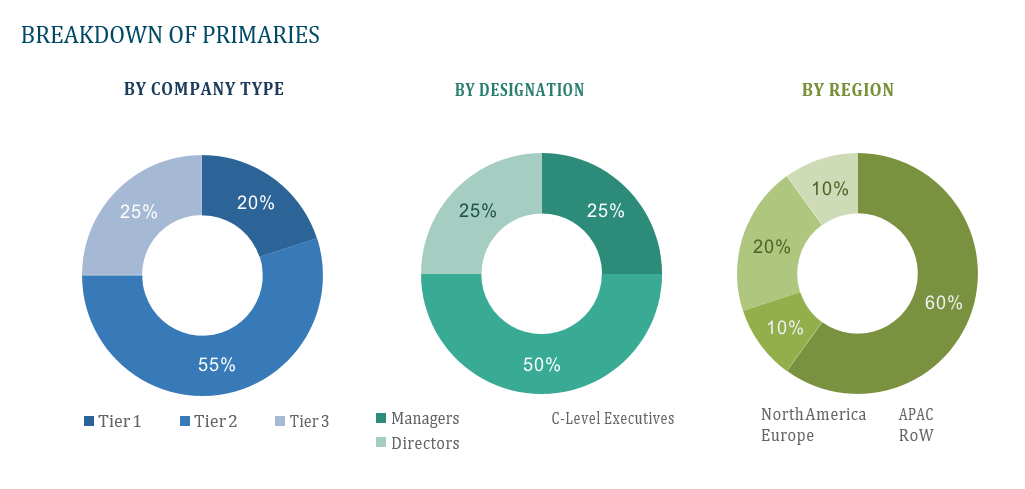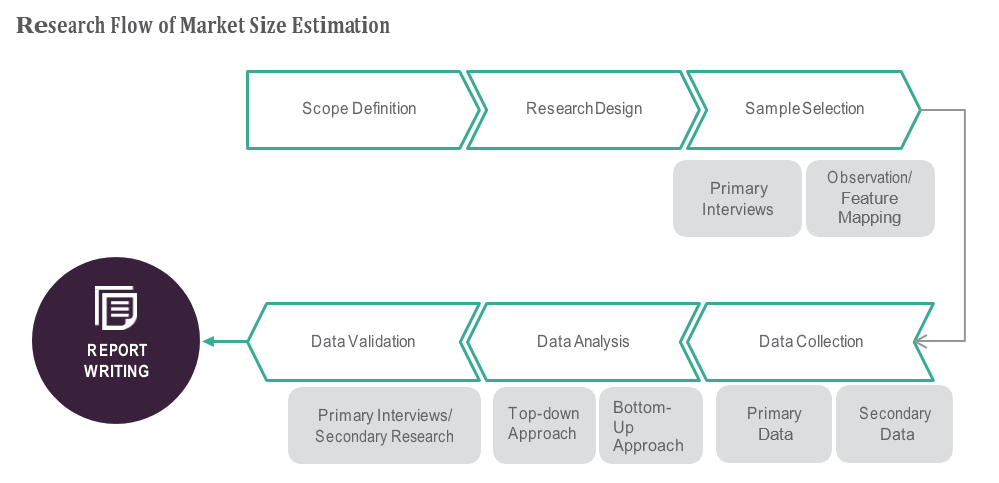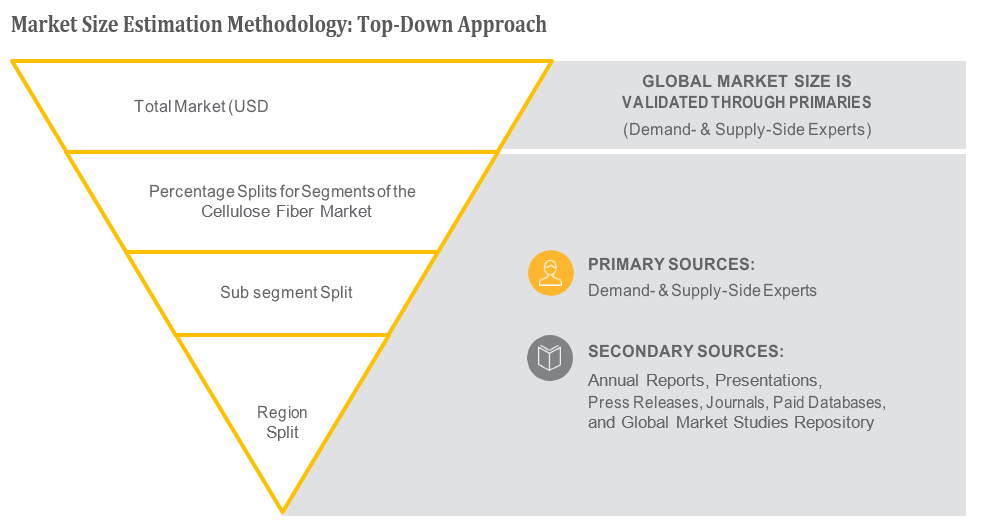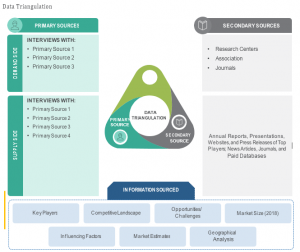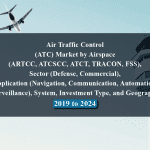OVERVIEW
The Small Drones Market is currently valued at USD 5.8 billion in 2024 and will be growing at a CAGR of 8.6% over the forecast period to reach an estimated USD 10.4 billion in revenue in 2029. The small drones market is experiencing rapid growth driven by advancements in technology, expanding applications across various industries, and increasing demand for unmanned aerial vehicles (UAVs). These drones, typically weighing less than 55 pounds, are versatile tools utilized for surveillance, aerial photography, agriculture, mapping, and delivery services, among other purposes. Their compact size, maneuverability, and affordability make them accessible to a wide range of users, including hobbyists, commercial enterprises, and government agencies. Moreover, ongoing innovations in battery life, payload capacity, and autonomous capabilities are further fueling market expansion, promising even more diverse and sophisticated applications in the near future.
Firstly, technological advancements have led to the development of more efficient and affordable drones with improved capabilities such as longer flight times, higher payload capacities, and enhanced autonomy. Additionally, the expanding range of applications across industries like agriculture, construction, media, and public safety is creating a significant demand for small drones. These UAVs offer cost-effective solutions for tasks such as aerial surveys, crop monitoring, infrastructure inspection, and emergency response. Furthermore, regulatory frameworks are becoming more accommodating, allowing for increased commercial use of drones and further stimulating market growth. Moreover, the rise of e-commerce and last-mile delivery services is driving demand for drones in logistics and transportation sectors, promising new opportunities for market expansion.
Market Dynamics
Drivers:
Firstly, technological advancements have led to the development of more efficient and affordable drones with improved capabilities such as longer flight times, higher payload capacities, and enhanced autonomy. Additionally, the expanding range of applications across industries like agriculture, construction, media, and public safety is creating a significant demand for small drones. These UAVs offer cost-effective solutions for tasks such as aerial surveys, crop monitoring, infrastructure inspection, and emergency response. Furthermore, regulatory frameworks are becoming more accommodating, allowing for increased commercial use of drones and further stimulating market growth. Moreover, the rise of e-commerce and last-mile delivery services is driving demand for drones in logistics and transportation sectors, promising new opportunities for market expansion.
Key Offerings:
In the dynamic landscape of small drones, key offerings encompass a spectrum of features and services tailored to diverse user needs. Manufacturers provide a range of drone models equipped with advanced technologies such as high-resolution cameras, obstacle avoidance systems, and real-time data transmission capabilities. These offerings cater to various applications, from aerial photography and videography to precision agriculture and industrial inspections. Additionally, companies often offer customization options to meet specific client requirements, along with comprehensive support services including maintenance, repair, and training programs. Furthermore, emerging trends such as drone-as-a-service (DaaS) and subscription-based models enable businesses to access drone capabilities without the burden of ownership, further expanding the market’s offerings to a wider audience.
Restraints :
The market for small drones is expanding quickly, and it has a lot of potential, but a few obstacles prevent it from reaching its full potential. Uncertainty surrounding regulations and airspace limitations represent a serious problem since they can restrict the use of drones for commercial purposes and make it more difficult for them to integrate into current infrastructure. Restrictions are also posed by concerns about security, privacy, and public safety, which leads regulatory agencies to establish strict policies and procedures. Furthermore, small drones’ operational capabilities may be constrained by technological limitations, such as low battery life and restricted range, especially in demanding tasks or inclement weather. Furthermore, some users face financial obstacles due to the high initial cost and continuing operating expenses of drones, which include maintenance, insurance, and licencing. Moreover, the absence of infrastructure and trained operators for drone management and operation can impede industry acceptance and impede market expansion. In order to effectively solve regulatory, technical, and operational issues, industry players, legislators, and technology developers must work together to overcome these constraints.
Regional Information:
• In North America, the small drones market is characterized by a robust regulatory framework established by authorities such as the Federal Aviation Administration (FAA) in the United States and Transport Canada. While this regulatory environment fosters innovation and safety, it also imposes strict guidelines on drone operations, impacting the market dynamics. The region boasts a thriving ecosystem of drone manufacturers, technology developers, and service providers, driven by significant investments in research and development. Additionally, North America leads in the adoption of drones across various sectors including agriculture, infrastructure, and public safety, propelled by a strong demand for advanced aerial solutions. Furthermore, partnerships between industry players and academic institutions contribute to the development of cutting-edge technologies and applications.
• In Europe, the small drones market showcases a diverse landscape shaped by a combination of stringent regulations and growing adoption across various industries. The European Union Aviation Safety Agency (EASA) plays a pivotal role in establishing unified regulatory standards, ensuring safety and interoperability within the region. Despite regulatory challenges, Europe remains a hotbed for innovation, with countries like France, Germany, and the UK emerging as key hubs for drone technology development and manufacturing. Moreover, Europe’s focus on sustainability and environmental stewardship is driving the adoption of drones for applications such as precision agriculture and environmental monitoring.
• In the Asia Pacific region, the small drones market is witnessing exponential growth fueled by rapid urbanization, industrialization, and technological advancements. Countries like China, Japan, and South Korea are leading the charge, both in manufacturing and adopting drones for diverse applications ranging from infrastructure inspection and aerial photography to e-commerce delivery. Additionally, favorable government initiatives and investments in research and development are further propelling market expansion across the region.
Recent Developments:
• In July 2023, SZ DJI Technology Co., Ltd. launched DJI Air 3, a new powerful drone. It is in addition to the Air Series with dual primary cameras. Featuring a wide-angle camera and a 3X medium tele camera, it empowers more users to get a sense of compression in their shots.
• In May 2023, SZ DJI Technology Co., Ltd. launched a commercial drone called DJI Matrice 350 RTK. With its 55-minute max flight time, the Matrice 350 RTK’s has a payload capacity of 2.7kg allowing operators a choice of payloads to tackle their task.
Key Players:
DJI, Parrot SA, AeroVironment, Inc., Yuneec International, Lockheed Martin Corporation, Northrop Grumman Corporation, and Thales Group.
– The Small Drones Market is expected to reach an estimated value of USD 10.4 billion in revenue by 2029.
2) What is the estimated CAGR of the Small Drones Market over the 2024 to 2029 forecast period?
– The CAGR is estimated to be 8.6% for the Small Drones Market over the 2024 to 2029.
3) Who are the key players in the Small Drones Market?
– DJI, Parrot SA, AeroVironment, Inc., Yuneec International, Lockheed Martin Corporation, Northrop Grumman Corporation, and Thales Group.
4) What are the drivers for the Small Drones Market?
– Technological advancements have created efficient, affordable drones with improved capabilities. Applications in agriculture, construction, media, and public safety increase demand for small drones. Regulatory frameworks are accommodating, promoting commercial drone use. E-commerce and last-mile delivery services drive demand in logistics and transportation sectors.
5 ) What are the restraints and challenges in the Small Drones Market?
– The small drones market faces challenges such as regulatory uncertainty, airspace restrictions, privacy, security, and public safety concerns. Technological limitations, high initial investment, and lack of skilled operators also limit their operational capabilities. To overcome these restraints, collaboration between industry stakeholders, policymakers, and technology developers is needed to effectively address regulatory, technical, and operational challenges.
6) What are the key applications and offerings of the Small Drones Market?
– Small drones offer advanced technologies, high-resolution cameras, and real-time data transmission for various applications. Manufacturers provide customization options, maintenance, repair, and training programs. Emerging trends like drone-as-a-service (DaaS) and subscription-based models allow businesses to access drone capabilities without ownership burden, expanding the market.
7) Which region is expected to drive the market for the forecast period?
– North America is expected to have the highest market growth from 2024 to 2029
Why Choose Us?
Insights into Market Trends: Global Market Studies reports provide valuable insights into market trends, including market size, segmentation, growth drivers, and market dynamics. This information helps clients make strategic decisions, such as product development, market positioning, and marketing strategies.
Competitor Analysis: Our reports provide detailed information about competitors, including their market share, product offerings, pricing, and competitive strategies. This data can be used to inform competitive strategies and to identify opportunities for growth and expansion.
Industry Forecasts: Our reports provide industry forecasts, which will inform your business strategies, such as investment decisions, production planning, and workforce planning. These forecasts can help you to prepare for future trends and to take advantage of growth opportunities.
Access to Industry Experts: Our solutions include contributions from industry experts, including analysts, consultants, and subject matter experts. This access to expert insights can be valuable for you to understand the market.
Time and Cost Savings: Our team at Global Market Studies can save you time and reduce the cost of conducting market research by providing comprehensive and up-to-date information in a single report, avoiding the need for additional market research efforts.


